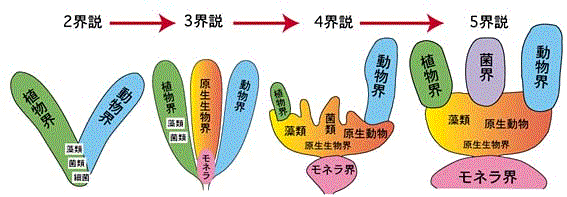 |
|
 |
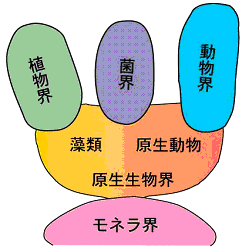 |
| 〔筑波大学生物科学系植物系統分類学研究室による藻類画像データの中の『五界説と藻類』から〕 | |
戻る<1|2|3|4|5|6|7|8|9|10|11|12|13|14|15<
|
|
| 配付プリント等 |
| 多細胞真核生物 | 植物界 | 光合成有機物生産 |
| 菌類界 | 有機物分解還元 | |
| 動物界 | 有機物消費 | |
| 単細胞真核生物 | 原生生物界 | |
| 単細胞原核生物 | モネラ界 |
| 補足説明 |
|
|
| 和名 | 英名 | 例:ヒト | 例:ローズマリー | 例:エノキタケ |
| 界: | Kingdom: | 動物界 | 植物界 | 菌界 |
| 門: | Phylum/Division: |
脊索動物門 (脊椎動物亜門) |
被子植物門 | 担子菌門 |
| 綱: | Class: | 哺乳綱 | 双子葉植物綱 | 菌じん綱 |
| 目: | Order: | サル目 | シソ目 | ハラタケ目 |
| 科: | Family: | ヒト科 | シソ科 | キシメジ科 |
| 属: | Genus: |
ヒト属 Homo |
ローズマリー属 Rosemarinus |
エノキタケ属 Flammulina |
| 種: | Species: | sapiens | officinalis | velutipes |
|
||||
 |
|
 |
 |
| 〔筑波大学生物科学系植物系統分類学研究室による藻類画像データの中の『五界説と藻類』から〕 | |
| 参考 |
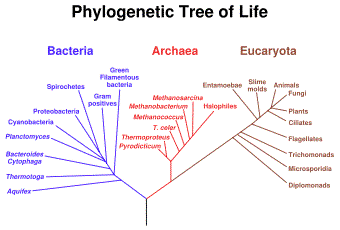 Fig. 1: A speculatively rooted tree for rRNA genes |
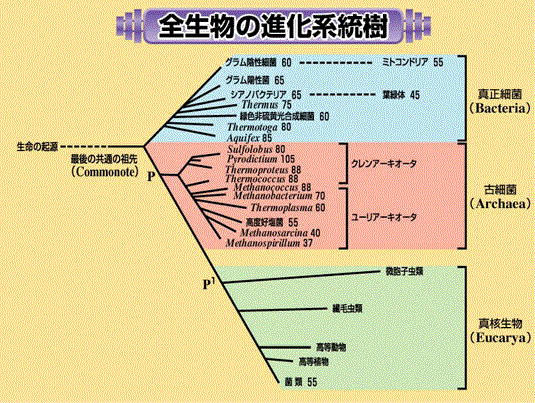 東京薬科大学 細胞機能学研究室の地球最古の生命からナノテクノロジーへの中の『全生物の進化系統樹』から |
 |
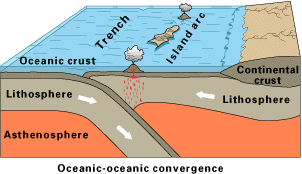 |
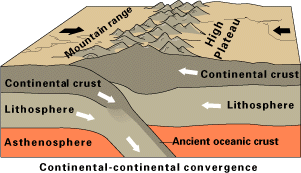 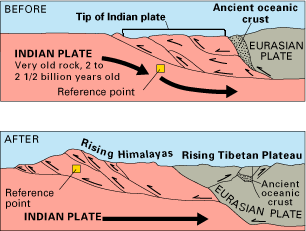 Cartoon cross sections showing the meeting of these two plates before and after their collision. The reference points (small squares) show the amount of uplift of an imaginary point in the Earth's crust during this mountain-building process. |
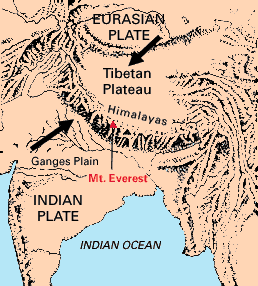 The collision between the Indian and Eurasian plates has pushed up the Himalayas and the Tibetan Plateau. 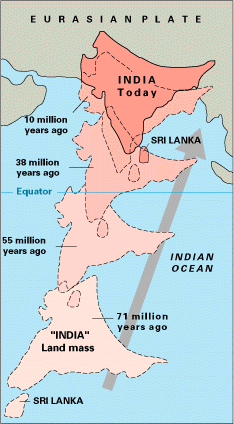 The 6,000-km-plus journey of the India landmass (Indian Plate) before its collision with Asia (Eurasian Plate) about 40 to 50 million years ago (see text). India was once situated well south of the Equator, near the continent of Australia. |
| 〔W. Jacquelyne Kious and Robert I. TillingによるThis Dynamic Earth: the Story of Plate Tectonicsから〕 | |
【学名について】(フリー百科事典『ウィキペディア(Wikipedia)』の中の『学名』から。)